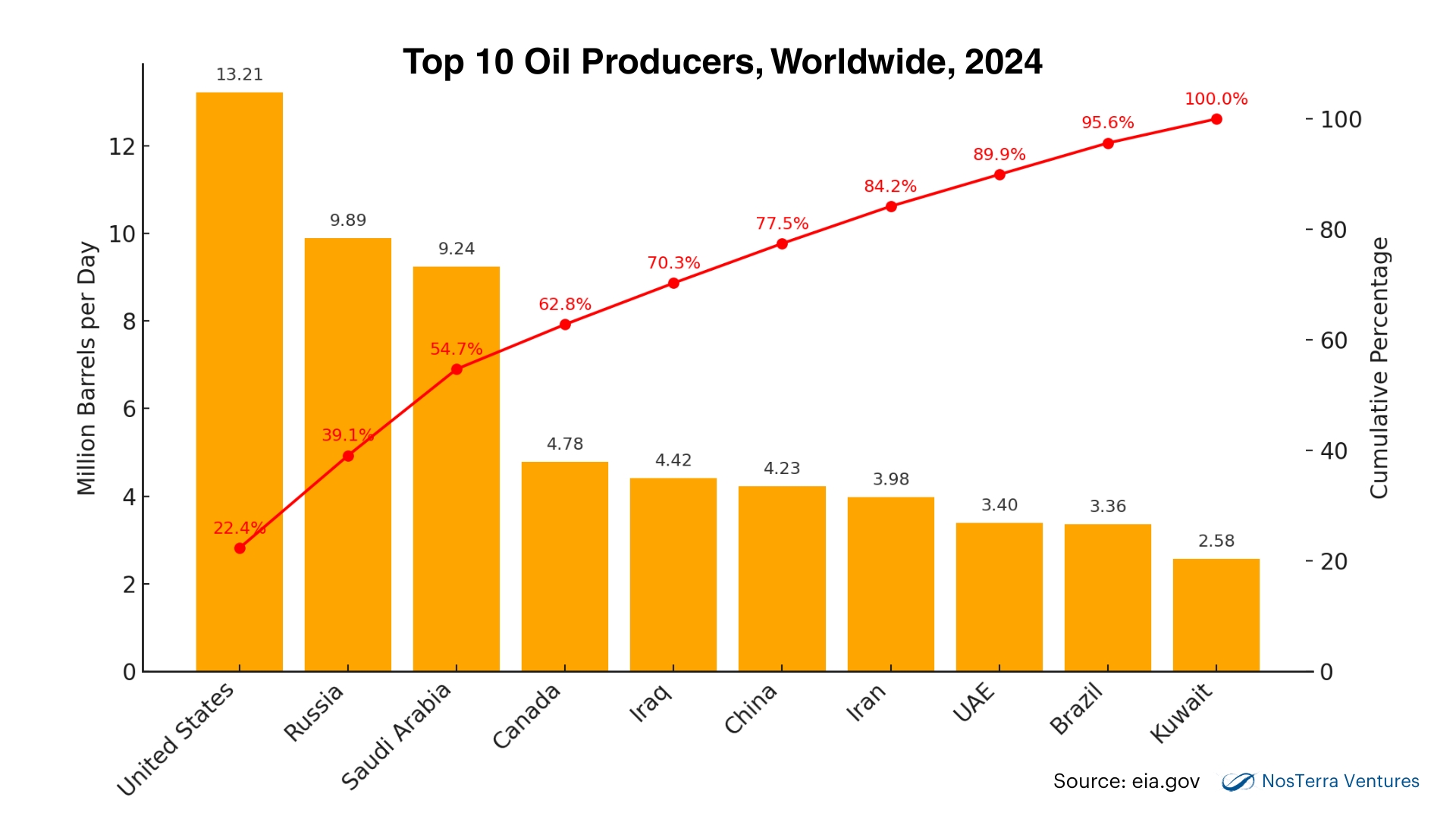The False Dichotomy of Pitting Oil Against Renewables

Note: This article was first published here.
In 2024, the U.S. produced over 13 million barrels per day of crude oil, and we are now the largest oil producer in the world.
When it comes to profit, however, American oil producers are watching their margins, because the cost of extraction here is significantly higher than in other countries. In fact, among the world’s four largest oil producers, the production cost per barrel would be ranked with Canada as the most expensive, the United States next, then Russia and Saudi Arabia as the cheapest.
According to the U.S. Energy Information Administration (eia.gov), the average break even price for oil from the Permian basin, which accounts for almost half of all U.S. crude, was between $62-64/barrel last year, while crude oil prices averaged $77 per barrel.
This puts American oil producers in a very tenuous position when the price of crude drops. Despite President Trump’s declaration to “Drill, Baby, Drill,” oil producers have their own ideas about their growth plans.
One oil executive recently said, “There is constant noise coming from the [Trump] administration saying $50-per-barrel oil is the target. Everyone should understand that $50 is not a sustainable price for oil. It needs to be mid $60s.” (This is from a recent survey conducted by the Dallas Fed of 136 exploration and production firms.)
It’s worth noting that the EIA predicted this month that Brent crude oil prices would average less than $70 per barrel in 2025 and about $58 per barrel in 2026. At this rate, the U.S. stands to lose market share faster than any other supplier when narrowing profit margins catch up with the cost of production.
Meanwhile, the Trump administration’s desire to deprioritize renewable energy investment in order to boost fossil-fuel industries is a false dichotomy. Petroleum primarily fuels the transportation industry and plays almost no part in electricity generation. As a country, we need to look at our overall energy supply and how we can fuel the continued growth of our economy — including the massive boom in data centers.
More than that, if we fueled our transportation needs with electricity, we would reap huge savings. As I’ve written before (and many other analysts have also confirmed), the cost to move an electric vehicle is significantly cheaper than a gasoline-powered car, mile for mile.
It’s obvious what the energy of the future will be — the cheapest and most abundant forms — which, by the way, will also be the greenest forms of energy. We need to invest in and be leaders in clean energy so that we can benefit from this multi-trillion-dollar market, not ignore or stifle it.
Sources:
• https://www.dallasfed.org/research/surveys/des/2025/2502
• https://www.eia.gov/todayinenergy/detail.php?id=65024
— Dave Welch